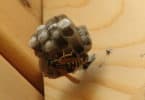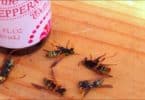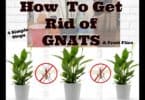Birds can be beneficial, as they pollinate plants and eat insects, as well as being an entertaining creature. However, they can also be a nuisance, whether it’s the noise they create or the crops they eat or even the mess they make with droppings. The latter can also be a health hazard, as it transmits diseases and parasites to people and livestock. It is illegal to kill, or even shoot at, most species of birds; leaving the option of simply repelling them.
Several methods exist to keep birds away from certain areas. Ultrasonic sound is effective and convenient as it is quiet to humans but disturbing to birds. There are also and basic audio repellents, if some noise is not a problem for people. Visual items can be used alone, but are best paired with sound to be most effective. Perching deterrents can be used in certain areas, though have more limitations on effectiveness.
Birds have a different range of hearing than humans do. Devices which emit an ultrasonic noise can drive off birds by simply annoying them. Such gadgets are powered by battery or can be plugged into an outlet. The former gives a greater choice of where to place the equipment.
Audible sound repellents are a good choice if only a certain kind of bird is unwanted. These machines have choices of different predator vocalizations which may scare some birds more than others. As with the ultrasonic device, these can be run with batteries or power cords.
Visual deterrents, as with audible ones, come in a variety of choices to suit individual species. The classic method is a scarecrow, though these do not work as well in modern times as most birds have now evolved to know they’re not a threat or in urban areas where they’re used to people being around.
Decoys that resemble predators such as hawks, owls, and even coyotes can be effective. More reliable are moving decoys, such as owls with wings spread and hanging from something so that the wind will make them move and seem more real. Some birds can get used to stationary decoys and get brave enough to stay in the area.
If a manufactured decoy is either too expensive or just doesn’t fit the environment, many home made types can work. Hanging a compact disk from fishing line will work, as the flashing of reflected sunlight seems to disturb birds. Strips of foil may also work, and can be more densely distributed with greater numbers of them in various places.
Perching avoidance is a simple way to keep birds from staying in a place. However, these need frequent replacing, and can become expensive in the long run. A strip of spikes are placed on the surface where birds are not wanted, keeping them from landing. A product that resembles caulk can be used, which is very sticky and irritating to the feet of birds, though can also attract dust and small debris which renders it ineffective and requires repeated application throughout the seasons.
If birds are welcome for their beauty and songs, but not for eating crops, netting is a good choice. Most netting is treated with formulas to withstand UV light, so that they do not weaken. Usually placed over plants by way of posts, so that the garden can get light, be watered and otherwise be attended. Netting is also an effective way of keeping birds from nesting in barns, stables and other buildings, without hampering ventilation.
Some people suggest getting a motion detected sprinkler, as a way to chase off birds. This may work, although some birds may find it to be a nice way to get a good bathing. Other people use the home remedy of sprinkling spices such as black pepper or cayenne, though this may not be effective and could make the birds sick. Most gardening stores will have the tools and equipment for repelling birds, or can refer a professional service for help with a bird problem.
<>







